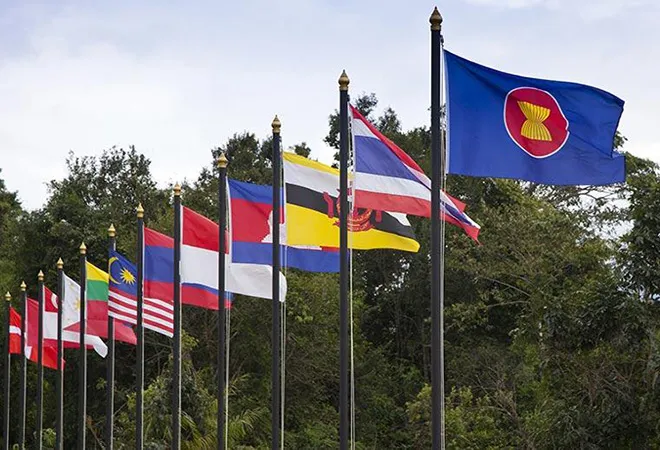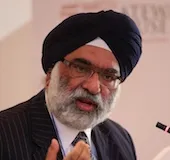
ASEAN is in its 56
th year. The challenge to ASEAN is how to maintain and substantiate its centrality. At the first ASEAN summit in 1976, the Treaty of Amity and Cooperation in Southeast Asia (TAC) was agreed upon.
The Charter was approved in 2008. In article 1.15, ASEAN declared its centrality as it pursued a functional agenda. This was an alternative to the experience of some ASEAN members aligning themselves with the United States (US) through the Southeast Asia Treaty Organisation (SEATO) and the consequences of the Vietnam War.
ASEAN centrality was an idea through which ASEAN managed relations and became more potent once the CLMV (Cambodia, Laos, Myanmar and Vietnam) countries joined between 1995 and 1999. What did ASEAN centrality entail? First, the maintenance of regional stability and peace among the countries ASEAN members, and, later with their partners across the region. The ASEAN Charter was buttressed by the opening of TAC to partners since 2003. India and China became the first non-ASEAN adherents to the TAC.
To this end, ASEAN started a regional architecture for a liberal order based on commonality of approach, with ASEAN at the core. The ASEAN Plus Three (APT), in 1997, with its main economic partners—Japan, Korea, and China—emerged. Individual Summits with them were introduced simultaneously. Other Dialogue Partners (DPs) also started ASEAN +1 Summits. The 10 DPs engaged ASEAN by acceding to the TAC and maintained the courtesy of always emphasising ASEAN centrality as a mantra of friendship.
ASEAN was the first in Asia to create a regional forum to discuss security matters.
The ASEAN Regional Forum (ARF) has been in place since 1994. This is the largest among ASEAN-centric bodies with 27 members. The next ASEAN -centric body was the
East Asia Summit (EAS) in 2005.
The 10 DPs engaged ASEAN by acceding to the TAC and maintained the courtesy of always emphasising ASEAN centrality as a mantra of friendship.
In 2010, two other ASEAN-centric bodies emerged. The ASEAN Defence Ministers Meeting Plus (ADMM+) brought in DPs, who were members of the EAS into a meeting with ASEAN counterparts. In the same year, the ASEAN Maritime Forum was introduced to deal with maritime issues. In 2012, it became the youngest ASEAN-centric institution, when the Extended ASEAN Maritime Forum (EAMF) was created.
This remains the weakest of the ASEAN-centric bodies.
These provided the regional architecture where countries of the region and its periphery, as well as the big powers, could all meet and hold discussions. Everybody allowed ASEAN to become the hub of this activity as it absolved them of rivalry. Perhaps, ASEAN assumed that it had now become the leader of the region, when it was a hub whose spokes were perhaps getting stronger.
So long as peace prevailed, this regional architecture performed well. As power rivalry enhanced, ASEAN adhered more to the US for security matters, but it deeply engaged with China for economic matters. This required management of the regional architecture, which ultimately called ASEAN centrality into question.
It is not a correct perception that ASEAN-centric regional architecture was the only one in the region. In 1989, Asia-Pacific Economic Cooperation (APEC) was created with the Secretariat in Singapore and not co-located with the ASEAN Secretariat in Jakarta. Subsequently, China backed the Conference on Interaction and Confidence Building Measures in Asia (
CICA) in 1999 and the Shanghai Cooperation Organization (SCO) in 2001.These were efforts at Asian cooperation without ASEAN centrality.
When China enunciated its Belt and Road Initiative (BRI), it did so in Jakarta in 2013. The BRI included ASEAN countries, but they were not at its core. Similarly, the Asian Infrastructure Investment Bank (
AIIB), led by China, invited ASEAN countries and others to join to become a major economic player in the region without conceding centrality.
When the Regional Comprehensive Economic Partnership (RCEP) negotiations started in 2012, it had ASEAN at its core since all 10 ASEAN countries joined it, but it was not an ASEAN-centric body since the fulcrum of weight often lay with non-ASEAN countries who either balanced it or tilted it one way or the other. ASEAN centrality may have persuaded India to stay in the RCEP. The perception was that RCEP was leaning towards China than resting on ASEAN’s core.
The Asian Infrastructure Investment Bank (AIIB), led by China, invited ASEAN countries and others to join to become a major economic player in the region without conceding centrality.
ASEAN believes that it initiated the regional architecture which reinforced its centrality. Except that it was
the association of other regional partners which made the perception of ASEAN centrality palpable. If other countries had not adhered to the TAC, become ASEAN DPs and joined the ASEAN-centric organisations, where would ASEAN centrality be?
The ASEAN-centric bodies are discussion fora, not implementing agencies. If a partner country co- chairs the forum, they could provide the Secretariat for various programs. ASEAN remained allergic to this, as it wanted its centrality emphasised and not shared. There is also little follow up on discussions at the ASEAN-centric fora.
As China became more aggressive, first economically, and then strategically in the South China Sea, the divisions among ASEAN wrecked their unity, which was a building block of their centrality. Since 2012, Chinese actions in the South China Sea prevented unified ASEAN responses.
China avoided the evolution of the Code of Conduct beyond a declaration since 2002. China's non- acceptance of ASEAN centrality where its interests were concerned meant that other powers followed. This manifests the problem:
ASEAN centrality is accepted by the partners to the extent that it suits them and unless ASEAN rises to the occasion to assert that centrality substantively, they don't progress.
Currently, there are four major challenges the ASEAN faces other than China and the US-China rivalry. Myanmar is a destabilising part of ASEAN. Myanmar does not see any demerit in ignoring ASEAN entreaties, particularly since ASEAN member states all do not follow the same line even though they agreed to the five-point consensus in 2021. DPs have differing perceptions of the Myanmar crisis. China and India both see Myanmar as a neighbouring, rather than ASEAN, country. Western partners expect ASEAN to play a vigorous role in restoring democracy.
Myanmar does not see any demerit in ignoring ASEAN entreaties, particularly since ASEAN member states all do not follow the same line even though they agreed to the five-point consensus in 2021.
Secondly,
ASEAN unity and centrality are waning, though all DPs reaffirm ASEAN centrality. What China did with the SCO, for instance, was to create distance from ASEAN, but the Quad and the
AUKUS are efforts by DPs of ASEAN. Strategically, these challenge ASEAN, as its ability to curb China is thin. This shows ASEAN not as a leader but a coordinator with diminishing strategic significance. Whether China is deterred or not, ASEAN centrality is dented. The Quad summits adhere to ASEAN centrality; AUKUS moves more independently from the regional architecture. The US, China, India, Japan and Australia have a commitment to ASEAN centrality expressed in all their current documents.
EAS partners have no problem with ASEAN centrality. They are concerned about ASEAN’s responsibility towards its centrality and whether it can maintain unity. The Quad and AUKUS are vocal about China, making ASEAN anxious about China’s reaction. ASEAN never visualised that the Quad members were all part of the EAS and the emergence of the Quad was a reflection of the lack of efficacy of the EAS.
Thirdly, is ASEAN neutral or is it strategically autonomous? As big power rivalry builds up, ASEAN finds itself disunited. They have no common position on Ukraine, leading to ASEAN countries voting differently in the United Nations General Assembly on Russia. Projection of ASEAN centrality as being neutrality or autonomy is hampered because these are
exercised by individual members rather than ASEAN, which is now not having a united position on either Myanmar, China or Ukraine.
Further, ASEAN opinion is concerned about its slow and ineffective approach with 82.6 percent
in a survey expressing these doubts. Seventy three percent feel that ASEAN is now an arena for contention which threatens ASEAN itself; 60.7 percent worry about ASEAN’s disunity. Apprehensions about ASEAN’s recovery from the pandemic has decreased to 37.2 percent. Challenges to ASEAN centrality clearly lie in the minds of its own people too.
Projection of ASEAN centrality as being neutrality or autonomy is hampered because these are exercised by individual members rather than ASEAN, which is now not having a united position on either Myanmar, China or Ukraine.
What should ASEAN do?
First
, as former foreign minister Marty Natalegawa pointed out, ASEAN should implement what it promises. If they agree on something, they must make sure it is achieved. This requires enhancing Secretariat support and using more resources of the Chair to deal with implementation. Secondly, the disunity in ASEAN handicaps their consensual decision-making. It is important that
new rules of decision-making not based on a total consensus, but on majority opinion emerge.
ASEAN centrality suffers as it is led annually by a country as chair and not by the ASEAN Secretariat. The ASEAN Secretary General has little to do. ASEAN needs to provide
greater scope and authority to the ASEAN Secretary General so that they work on a continuum of ideas to uphold the Charter. He should work in tandem with the ASEAN chair and can provide the continuity which a disunited ASEAN is unable to provide.
Finally, ASEAN needs the support of all its partners, to pledge not only their platitudinous support to ASEAN centrality, but to actually abide by its ideals and give ASEAN the leverage to act. For this, ASEAN must show that it is effective, in which case its partners support will be palpable.
The views expressed above belong to the author(s). ORF research and analyses now available on Telegram! Click here to access our curated content — blogs, longforms and interviews.



 ASEAN is in its 56th year. The challenge to ASEAN is how to maintain and substantiate its centrality. At the first ASEAN summit in 1976, the Treaty of Amity and Cooperation in Southeast Asia (TAC) was agreed upon.
ASEAN is in its 56th year. The challenge to ASEAN is how to maintain and substantiate its centrality. At the first ASEAN summit in 1976, the Treaty of Amity and Cooperation in Southeast Asia (TAC) was agreed upon.  PREV
PREV


